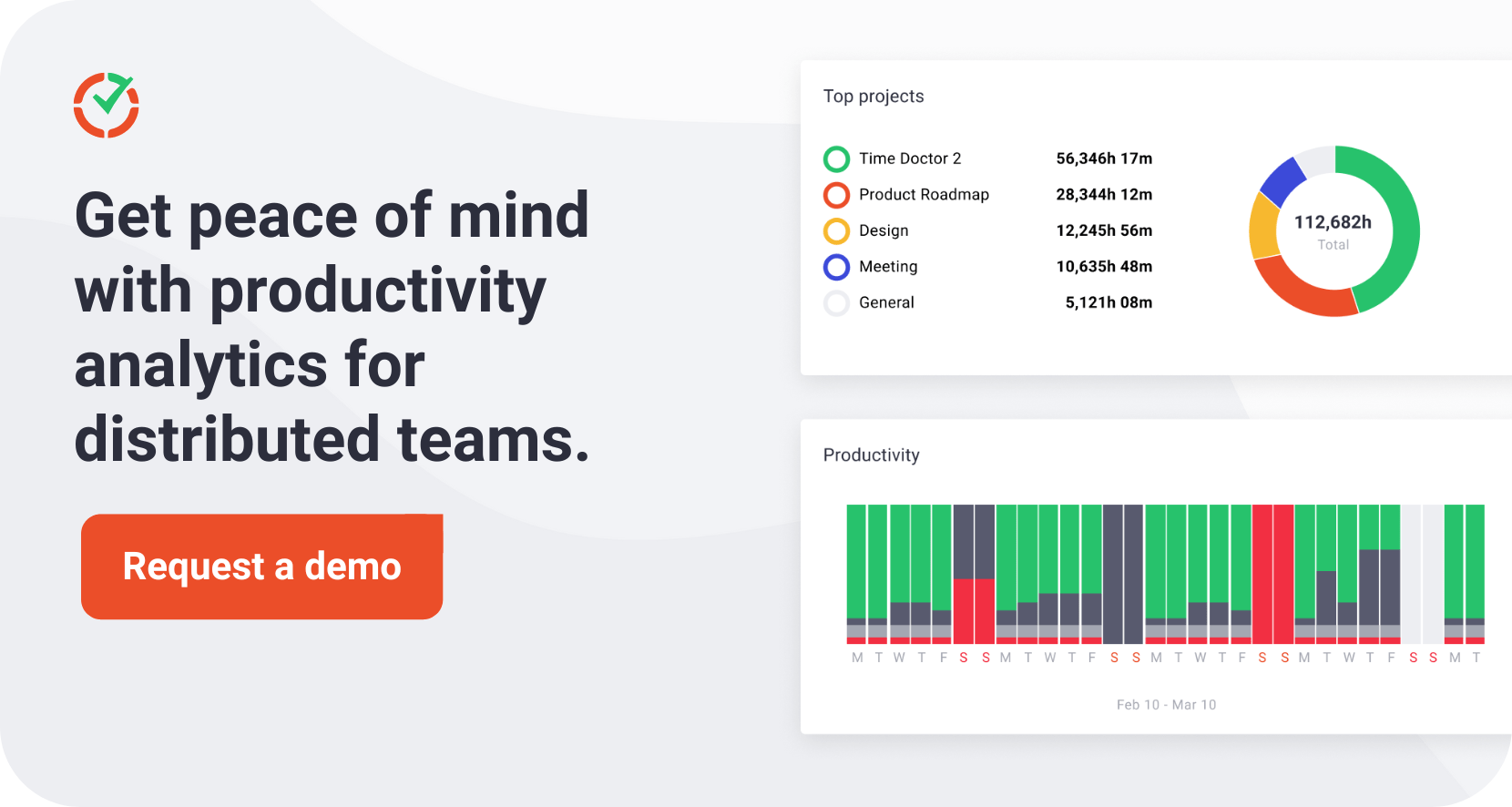25
What the headlines tell us about the future of hybrid work schedules
After months of failed negotiations, unionization and bubbling frustration, New York Times (NYT) tech workers announced a half-day strike on October 30, 2023.
Of the almost 700 strikers, over 500 joined via Zoom and around 150 formed a picket line outside the NYT HQ. Some wore Halloween costumes.
From the outside, this strike might have looked a bit odd.
But at its core is an issue that’s making headlines worldwide, often for the wrong reasons.
Return-to-office mandates seem to be the latest craze sweeping the business world. And NYT tech workers are far from the only people unhappy with what’s happening.
RTO mandates are confusing and conflicting
Return-to-office (RTO) mandates are a sign the pandemic is finally over. People can gather indoors again, shake hands with colleagues, and hold meetings in conference rooms.
The only problem? They don’t want to.
RTO mandates have been called “ridiculous and cruel”, “layoffs in disguise” and “damaging”. They have been shown to take a financial, emotional and physical toll on employees and managers alike.
OwlLabs’ latest survey found that almost 60% of employees are unhappy about returning to the office, and McKinsey data suggests up to 30% of employees would look for new jobs if forced to work in the office full-time.
Why, then, are nearly 90% of companies planning RTO policies in 2023 and 2024?
To answer that question, we need to tune out the clickbait noise and listen to what’s really going on.
RTO policies vs RTO mandates: The difference is in the detail
Kathy Zhang, who works on the NYT audience team and chairs the Times Tech Guild, said, “The company continues to act like we don’t exist”.
The situation is similar at Apple. When the company’s RTO policy rolled out, a group of employees tweeted a petition pushing back. They claimed the policy failed to account for individual diversity and role-specific demands.
Then there’s the irony of Zoom CEO Eric Yuan recalling people to the office (via a Zoom meeting). The move triggered a backlash, particularly that “implied a ‘take it or leave the company’ ultimatum”.
Realistically, it’s hard to imagine that leaders at the NYT, Apple and Zoom are actively working against employees. They likely believe that returning to the office is the best course of action.
(We’ll give the NYT the benefit of the doubt because headlines like Even Zoom Is Making People Return to the Office and The Five-Day Office Week Is Dead appeared on the site in the weeks before the October strike).
The common note in criticism from employees and media outlets isn’t the fact of RTO policies. It’s the lack of consideration that went into the decisions.
Where these companies – and countless more – went awry was failing to read the room. They issued return-to-office mandates without negotiating, without a clear purpose and without factoring in what works for employees.
Are employees really against returning to the office?
In a word? No.
Anyone who has spent a long stretch working from home (WFH) over the last few years knows how lonely it can get.
The Guardian even compared full-time remote work to a dating app, calling it “isolating, joyless and bad for us”.
It’s important to remember there are more than two options. While most workers don’t want to work from the office five days a week, they are looking forward to coming in on some days. It seems the sweet spot is between 2.2 and 3 days per week or around 50% of the time.
Looking into RTO policies in the marketing industry, Digiday found that 60% of agency professionals were working from the office at least once a week. That’s despite 44% of companies not requiring any office attendance whatsoever.
They’re going back because they want to.
Or are they?
Tension between employees and managers in hybrid work
Remote work guru and Stanford professor Nicholas Bloom has published two studies, one in 2013 and another this year, looking at the effectiveness of remote and hybrid work.
Despite being 10 years apart, both studies drew similar conclusions:
- Working from home was more productive with no quality decrease
- Attrition was lower among home workers
- Remote workers were less likely to be tapped for promotions
That’s right – despite significant productivity inequalities, managers still chose in-office workers for promotions.
It hardly mattered that productivity increased (again), or that employees were more engaged (again), or that the entire point of the second study was to prove to managers that WFH works.
Managers still didn’t buy it.
Misalignment between managers’ perceptions of remote work and employees’ experience is the root of the RTO issue.
It’s the reason NYT tech workers went on strike. It’s why Apple employees pushed back. It’s why Fortune magazine called for a “truce” in the “return to office war”.
So, what can we do to resolve the tension between office-proud managers and flexibility-focused workers?
The first step is understanding what’s behind each mindset. Surveys and studies show managers don’t trust employees to work without supervision, while employees report being happier and more productive at home.
Tracking productivity analytics provides an answer that both sides can use to empathize.
However, it’s crucial to clarify expectations from the outset. Otherwise, these miscommunications will not only continue but intensify.
For example, we explored TikTok’s compliance-focused RTO policy in a previous article. A similar narrative is playing out for other companies that focus on compliance rather than productivity.
Emphasizing in-person attendance (compliance) only encourages a culture of “coffee badging”. Employees come to the office to be seen, not necessarily to work.
An effective RTO policy looks beyond office attendance rates, instead benchmarking success on deeper productivity insights.
This shift in perspective, although challenging for managers with a traditional-office mindset, is crucial to cultivating a productivity culture.
How to design a win-win RTO policy
What we’re seeing in countless headlines, from clickbait like Forced Office Return Insanity? to the more balanced Data-driven Office Policies Balancing Needs (published on the same site 13 days apart), is the importance of good data in designing RTO policies.
We hear you asking whether it’s really so simple, whether data is really the only difference between success and strikes.
Our view? Yes, good data really is that important.
When leaders key into reliable and relevant productivity signals using tools like Time Doctor, they are able to:
- Know how, when and where people want to work
- Design a policy that boosted productivity in key areas
- Prevent burnout and reduce attrition
- Sleep easy knowing people are working hard at home
- Identify minor productivity issues before they become major disputes
Productivity analytics has also been shown to make employees more accountable for their time and more productive.
There are other elements at play, of course. Old-school leaders might think people can’t be trusted to work from home. Others refuse to accept that work has evolved. And employees feel their chances of being overlooked for promotions are higher when WFH.
Still, even advocates of seventy-hour weeks and sleeping in the office can’t maintain their position forever when faced with rock-solid data.
We know this because we have data showing that the tide is starting to turn.
It’ll take time, but the benefits are there for the taking when organizations embrace flexibility.
Your playbook for (re)building trust in hybrid work schedules
RTO policies are complex. Although they can be a change for the better, even a well-intentioned policy can potentially be a powder keg in the current context.
Our latest guide, Navigating the New Normal: Your playbook for (re)building trust in hybrid work, provides a blueprint for designing a policy that works for everyone. It provides guidance on balancing employees’ preference for hybrid work schedules with managers’ unease at losing oversight, with examples and data gathered from far and wide.
If you want to formalize hybrid guidelines or implement an RTO policy that works for everyone, then this guide is for you.
Download it for free here and keep reading to get a sneak peek.
Step 1: Clarify RTO policy goals
Return-to-office policies need a solid business case for why calling people back even part-time is imperative. Work with leaders to establish organizational goals and make the roadmap to RTO clear.
Step 2: Take your team’s pulse
Organizational goals are not the only factor. Leaders who intentionally ignore productivity analytics and assume employees will fall in line are in for a rude shock when the picket line forms outside the front door.
Employee satisfaction surveys are also useful in this stage. Asking for input is not only useful for building an employee-friendly RTO policy but also helps employees feel valued.
For an in-depth look at gathering data for a hybrid or RTO policy, check out our guide to developing a hybrid work schedule that works for everyone.
Step 3: Design a collaborative policy
With organizational goals in one hand and productivity analytics in the other, you can start to piece together a policy that works for everyone.
Remember that every RTO policy is built on unique quirks of culture, space, tech and growth considerations. You don’t need to start from scratch. But you will need internal data and a diverse sounding board.
Step 4: Communicate clearly
The only thing more damaging to employee engagement and well-being than a lack of flexibility is a lack of clarity.
Communicating the benefits of an RTO policy and inviting feedback is essential for maintaining employee engagement and productivity.
You should be able to communicate the purpose, plan, scale and scope for returning to the office in a one-pager that is accessible to everyone.
Step 5: Measure and adjust
RTO policies are hard to get right on the first try. But there is a wide gap between minor tweaks and employees tweeting a petition.
Measuring and adjusting the RTO-slash-hybrid policy is a similar balancing act to the design phase. Employees want flexibility, so watch out for reluctance in schedule non-adherence, absenteeism or unscheduled breaks.
Managers will also need frequent reminders that flexibility is better for everyone. This comes in the form of digestible reports – or better, access to transparent productivity analytics.
Effective RTO policies start (and end) with good data
When you parse the headlines around RTO mandates, and the petitions and strikes that result, it’s clear that the policy itself isn’t the problem. Instead, poor communication is the main culprit, closely followed by uncollaborative design.
People aren’t against working in the office. They’re against inflexibility.
The tricky part is balancing what’s best for employees and the organization. Some businesses have launched experiments, but we prefer a data-driven approach.
Productivity tracking is crucial for laying out the playing field for RTO. The answers to many fundamental questions are there in the data. You just need to know where to look.
Time Doctor brings the insights to you
Our mission is to support organizations by providing adaptable accountability and productivity tracking tools that dovetail into any company culture, location and size. We give managers peace of mind, employees agency, leaders confidence, and HR transparency.
No matter where your company falls on the remote work spectrum, Time Doctor helps you deliver an RTO policy that’s built on data and designed to work for everyone.
Book a 1:1 consultation to explore Time Doctor’s features in more detail and learn how productivity analytics can help you not only avoid a protest but cultivate a thriving culture.
Book a demo today!

Carlo Borja is the Head of Content Marketing for Time Doctor, a productivity analytics software for distributed teams. He is a remote work advocate, a father and a coffee junkie.



